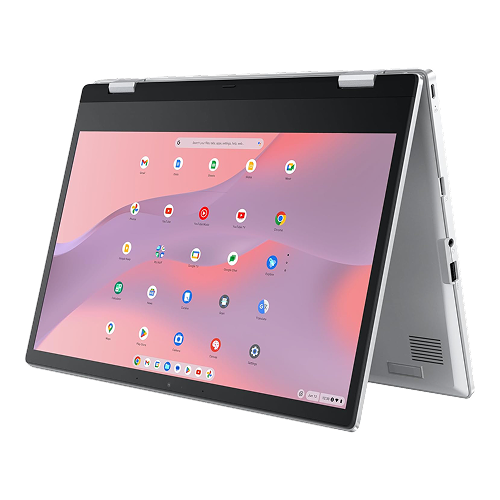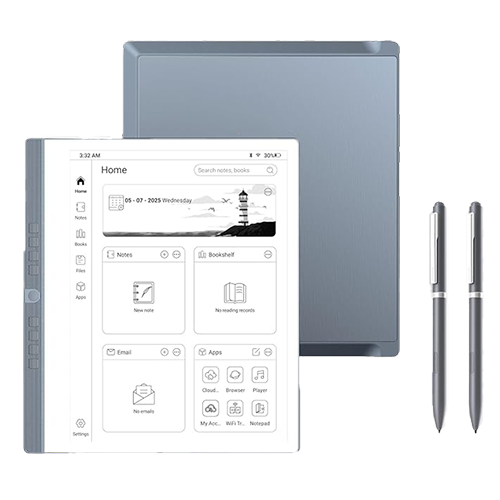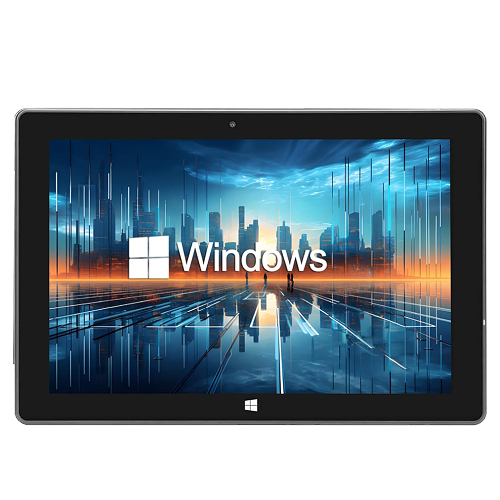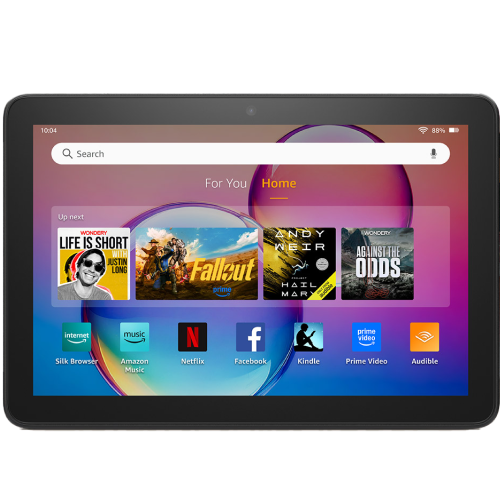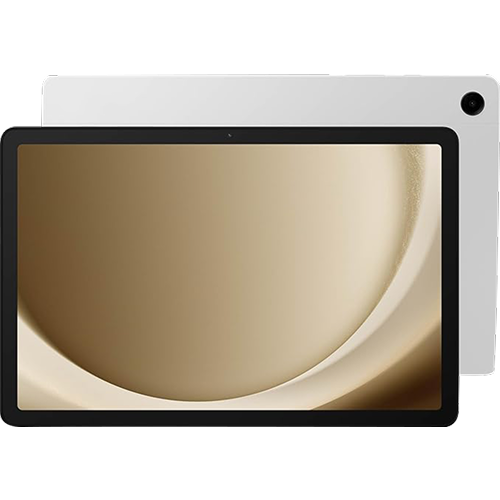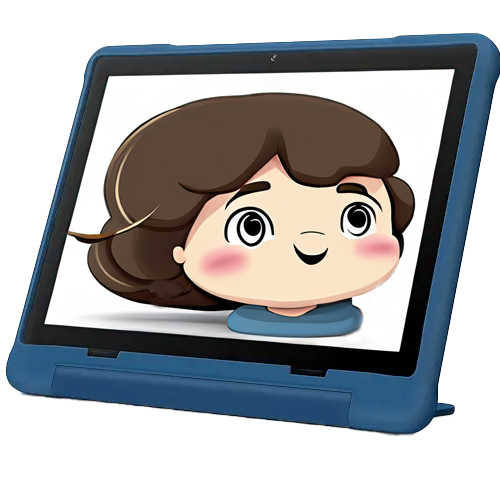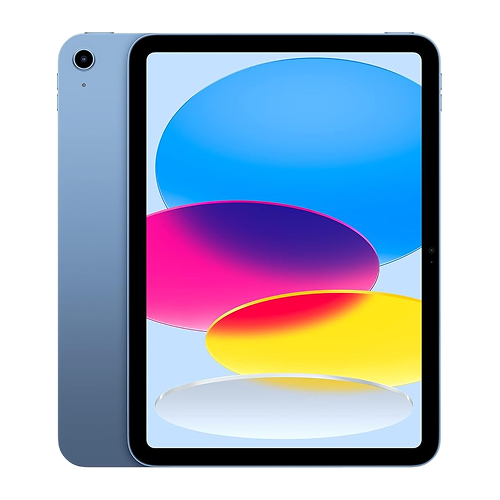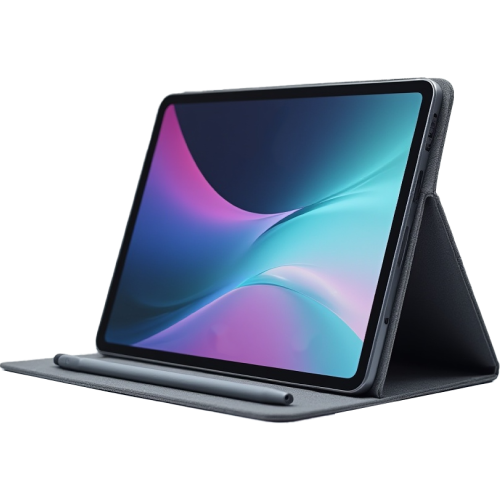The tablet has matured from a trendy new gadget to a purposeful device that fills the space between smartphones and laptops. As manufacturers refine tablets for distinct user needs, the variety has exploded — making it harder than ever to decide which one fits best.
This comprehensive buyer’s guide will walk you through key features and specifications to consider, common buying mistakes to avoid, and an overview of leading tablet categories and brands.
Let’s dive in!
Key Features and Specifications to Consider
Display Quality (Resolution, Panel Type, and Size)
Your display impacts everything from visual comfort to overall enjoyment. Text should be readable without constant zooming, and media should look immersive. That’s why screen quality is a top-tier factor in our evaluation system. Often, seeing two devices side by side is the best way to notice the difference — better screens stand out immediately.
Resolution and Sharpness
Look for a screen with at least Full HD (1920×1080) resolution. This ensures clear images and crisp text. Pixel density (measured in ppi) should ideally fall between 220 and 300 for optimal sharpness.
Displays in this range, like those found on many premium devices, make pixels nearly invisible, enhancing text legibility and video clarity. For reading, streaming, or browsing, anything under 1080p can feel noticeably grainy.
Screen Technology
![[MK] Draft: Buyer\'s Guide for Tablets](https://www.market.com/wp-content/uploads/2025/10/-mk-draft-buyer-s-guide-for-tablets-1.png) Most modern tablets use either IPS LCD or OLED-based panels. OLED options, favored in premium tablets, stand out for their vivid colors and perfect black levels. Each pixel is self-illuminated, which results in stunning contrast and vibrant images.
Most modern tablets use either IPS LCD or OLED-based panels. OLED options, favored in premium tablets, stand out for their vivid colors and perfect black levels. Each pixel is self-illuminated, which results in stunning contrast and vibrant images.
IPS LCDs, while not as punchy, are still excellent in terms of color accuracy and viewing angles and are common in both Apple and Android devices. Lower-end LCDs, however, often suffer from poor angles and muted colors, negatively affecting visual performance.
Display Size and Aspect Ratio
Tablet screens span from around 7 inches to over 12 inches.
- Bigger screens enhance tasks like watching videos or multitasking, but also add weight and bulk.
- Smaller tablets are great for travel and casual reading but might not suit productivity needs.
Aspect ratio also plays a key role: Apple’s 4:3 format is ideal for vertical reading and browsing, while 16:9 or 16:10 works better for watching movies in landscape mode. A 3:2 ratio provides a solid balance between reading and media use.
Brightness and Reflection Handling
A screen that reaches at least 500 nits of brightness is easier to view outdoors or in bright rooms. Additionally, features like anti-glare coatings and laminated displays reduce reflections and improve clarity, especially when using the tablet under direct lighting.
Processor Performance (CPU and Speed)
The speed and responsiveness of your tablet rest heavily on the processor. A good chip ensures the device reacts instantly, even when juggling several apps. We heavily favor tablets with high-performance processors because they greatly enhance both current usability and long-term satisfaction.
Processor Tiers and Generations
Top-performing tablets feature high-end processors like Apple’s A- or M-series chips and the latest Qualcomm Snapdragon 8 series. These chips deliver swift performance across tasks and remain viable for years.
Midrange processors like the Snapdragon 6 series or older Apple chips offer solid day-to-day performance but may not age as well.
At the budget end, entry-level chips—common in low-cost tablets—struggle with anything more than basic use, and are prone to slowdowns.
![[MK] Draft: Buyer\'s Guide for Tablets](https://www.market.com/wp-content/uploads/2025/10/-mk-draft-buyer-s-guide-for-tablets-2.jpeg)
Core Count and Clock Speed
While specs like core count (e.g., eight cores) and speed (GHz) give a rough idea of capability, real performance depends on the chip’s architecture.
For instance, Apple chips often outperform similarly clocked processors from other manufacturers. Newer generations generally bring better power efficiency and speed, so focus on chip generation over raw GHz figures.
Matching Processor to Usage
If your needs are limited to email, light streaming, and reading, a mid-tier chip may suffice. But if you plan to do video editing, gaming, or intend to keep the tablet for several years, go for a higher-end processor.
Powerful CPUs ensure apps load quickly, system navigation is fluid, and the device stays relevant as software demands increase.
Memory (RAM) and Multitasking
While RAM doesn’t boost single-task speed, it determines how well your tablet handles multitasking and how smoothly it performs as demands increase. Devices with low RAM can quickly feel outdated, while those with ample memory stay responsive for longer.
For users who rely on their tablet for work or frequently run multiple apps, choosing a model with more RAM is a smart long-term decision.
RAM Capacity Ranges
Tablet memory typically spans from 2GB in low-cost models to 16GB in high-end devices. For Android and Windows tablets, 4GB is the bare minimum for a decent experience. With that amount, basic multitasking is possible, but performance may drop with heavier usage.
Opt for at least 6GB if you expect to keep multiple apps or tabs open often. Devices with 8GB or more handle advanced multitasking and memory-intensive apps with ease, making them better for longevity.
Tablet RAM Capacity Ladder: What Each Level is Good At
![[MK] Draft: Buyer\'s Guide for Tablets](https://www.market.com/wp-content/uploads/2025/10/-mk-draft-buyer-s-guide-for-tablets-3.jpeg)
System Optimization Differences
Some operating systems make more efficient use of RAM. Apple’s iPadOS, for example, is well-tuned and runs well on lower memory configurations.
By contrast, Android tablets benefit from more RAM to support widgets and background apps. Windows-based tablets generally require 8GB or more to function comfortably, especially when running desktop software.
Practical Effects of Low RAM
Too little memory can lead to frequent app reloads, web pages refreshing on their own, or noticeable lag during multitasking.
If switching between a video call and a browser feels sluggish or apps constantly restart, it’s often due to limited RAM. Higher memory keeps your workflow uninterrupted and your device feeling fast.
Battery Life and Charging
A tablet that dies early can’t serve its purpose when you need it. Long battery life is essential for mobile use, letting you watch movies on a flight or take notes in class all day without finding an outlet.
Since batteries degrade gradually, starting with one that delivers solid endurance means the tablet remains useful even after years of use. This is why battery performance is one of the most heavily weighted categories in our scoring system.
Battery Life Expectations
Manufacturers usually provide a general estimate for battery life, such as “up to 10 hours of video playback.” However, these numbers can vary greatly depending on screen brightness, apps being used, or whether you’re on Wi-Fi or mobile data.
For most users, a realistic goal is 8 to 10 hours of active use, which is enough for a full day of moderate tasks. Some premium devices now go beyond that, reaching 11 or 12 hours, while a few kid-focused or ultra-efficient models even stretch beyond 14.
In contrast, budget tablets that last only five or six hours can quickly become frustrating due to frequent charging. Our evaluation system favors tablets offering 10 hours or more, which indicates they’re suitable for daily use without interruption.
Battery Size (mAh)
The battery’s capacity, typically listed in milliamp-hours (mAh), gives a rough idea of potential runtime. Larger batteries, like those rated at 8000 mAh or more in 10-inch tablets, can last longer, especially during video streaming or gaming.
Power efficiency, however, is just as important. A device with a massive battery might still drain quickly if paired with an inefficient processor or bright, high-resolution screen. That’s why comparing battery capacity is most useful when evaluating devices with similar components.
Charging Speed and Port Type
Charging time and port style can also impact convenience. Modern tablets mostly use USB-C connectors, which support faster charging and data transfer. Some even support advanced protocols that allow faster top-ups or expanded functions like video output.
On the other hand, older or inexpensive models may use Micro-USB, which charges more slowly and is less versatile. Fast charging capabilities, such as 30W or higher, can bring a tablet from empty to half full in under an hour. This is a major benefit when you’re pressed for time.
Conversely, tablets with basic 5W charging may require several hours to recharge fully.
Wireless Charging and Docks
Some tablets also support wireless charging or include dock-based solutions. This feature is more about convenience than necessity but can be useful for home use. Devices with magnetic docks or speaker bases that double as chargers can easily transform into smart displays or media centers when idle.
Display Refresh Rate (Smoothness of Scrolling)
While not essential, high refresh rates contribute to a premium experience and can make a mid-tier device feel much faster.
A 120 Hz screen provides a perceptual boost in responsiveness, even if the processor is mid-range. Look for tablets that offer 90 Hz or higher refresh rates. For users who value smooth interactions or use the device professionally, this spec is worth paying attention to.
At 60 Hz, motion is standard and functional. But bumping that rate up to 90 Hz or 120 Hz creates noticeably smoother scrolling and animations. Navigating through the user interface or flipping through pages feels more natural and responsive.
For those who try it, the upgrade often feels so significant they don’t want to return to 60 Hz. Premium devices like certain iPads or Android tablets now feature 120 Hz displays as standard, while some mid-range models offer 90 Hz as a compromise between fluidity and battery consumption. Entry-level tablets generally stick with 60 Hz to keep costs low.
Not all activities benefit equally from higher refresh rates. Watching video, for example, doesn’t gain much since most content is shot at 24 to 60 frames per second.
Tasks like gaming, drawing, or quick app switching, however, benefit significantly. For digital artists using a stylus, a faster screen refresh can reduce the visible lag between pen movement and on-screen input. Gamers will enjoy smoother action, while everyday users will appreciate how snappy and polished the interface feels.
One downside is that higher refresh rates consume more battery. Many newer tablets adjust refresh dynamically depending on activity, or allow users to select lower settings to conserve energy. Budget devices may not offer these options, sticking to fixed refresh rates.
Storage Capacity (and Expandability)
Running out of space leads to frequent cleanup and frustration. While storage isn’t always top-of-mind during purchase, it becomes important quickly once apps, media, and updates accumulate.
Our advice is to choose slightly more storage than you think you’ll need or ensure the tablet supports memory cards or USB drive storage. This helps avoid a common regret: wishing you had opted for more capacity in the first place.
Storage Sizes
Tablets commonly come in storage variants ranging from 32 GB to 256 GB or higher. For light use, such as browsing and occasional app use, 64 GB is a practical minimum, especially since the operating system itself consumes a portion of that space. If you plan to store videos, photos, or larger apps, 128 GB or more is advisable. Those who work with high-resolution images, games, or offline media libraries might need 256 GB or more.
![[MK] Draft: Buyer\'s Guide for Tablets](https://www.market.com/wp-content/uploads/2025/10/-mk-draft-buyer-s-guide-for-tablets-4.jpeg)
Expandable Options
Here’s a big differentiator: Does the tablet support microSD cards or other expandable storage? This is a cost-effective way to extend capacity, particularly if your tablet only has 32 or 64 GB of internal space.
Many Android and Windows tablets offer this option, while Apple devices do not. If you plan to carry a lot of media or work files, getting a device with expandable memory can help avoid paying upfront for a high-capacity model.
External Drives and Cloud Integration
Cloud services can supplement local storage if you have consistent internet access. Platforms like iCloud or Google Drive are useful for documents and backups, though they won’t help much when offline.
Some tablets also support external USB drives or flash storage. Devices with USB-C ports can often connect to external drives directly, making it easier to offload or move large files.
Audio Quality (Speakers & Sound)
If your tablet will be used for watching movies, chatting online, or playing music without extra speakers, then onboard audio matters. Poor-quality sound can make voices hard to hear or music dull, while good speakers create a fuller, more enjoyable experience.
Even if you mainly use headphones, having decent built-in audio is beneficial for casual listening or speakerphone use.
Speaker Setup
Premium tablets frequently include quad speakers (four speakers, typically two on each side in landscape orientation) to provide louder and more immersive stereo sound.
Devices like top-tier iPads and flagship Android tablets frequently include these quad-speaker arrangements. Mid-level models might have two speakers that deliver decent stereo effects but may lack volume or depth.
On the budget end, some tablets only have one speaker, usually located at the bottom. These mono speakers can sound flat or muffled, especially when partially blocked.
Sound Placement and Clarity
It’s not just about how many speakers the tablet has, but also where they’re placed. Front-facing speakers (like on some Lenovo or older Samsung tablets) provide the best listening experience since they direct audio straight at the user. Downward- or rear-facing speakers may sound distant or get covered by your hands.
Some manufacturers also fine-tune their audio using third-party expertise or sound-enhancement technologies. A quality tablet should be able to project clear audio at high volume without distorting. Even though tablets are compact, premium models can produce noticeable bass and a more dynamic range.
Headphones and Bluetooth
Check for a headphone jack if you or someone else using the device prefers wired headphones. Many newer tablets have eliminated the 3.5mm port, assuming users will rely on Bluetooth or USB-C headphones.
Some affordable or child-focused tablets still include it, however, offering added flexibility. If the tablet doesn’t have a jack, make sure it supports the latest version of Bluetooth for reliable wireless audio.
Build Quality and Design
You’ll handle your tablet constantly, so a well-built device makes a big difference in both daily enjoyment and longevity.
Solid materials and precise construction typically last longer and perform better over time, especially under heavy use. That’s why build quality carries moderate weight in our scoring.
A well-constructed tablet also tends to resist damage from bumps or drops better than one with flimsy construction. Whenever possible, try to check the device in-store or take advantage of return policies to get a feel for its sturdiness.
Material Choices
Tablets at the higher and mid-level price points often come with metal builds, typically using aluminum for a solid, premium feel. Metal helps dissipate heat more effectively and adds structural integrity, making the device feel sturdy. These designs generally withstand wear and tear better, though they may dent if dropped.
Budget tablets, on the other hand, often use plastic to reduce costs. While some plastic builds are rigid and well-finished, others may feel hollow or flimsy.
Design Features and Comfort
Ergonomics and design details play a big role in usability.
Slimmer bezels mean a more compact device for the screen size, but you still want enough border to hold the tablet without accidental touches.
Weight and balance are also important. Lighter tablets are easier to hold for extended periods, especially for reading or casual browsing. With larger tablets, weight distribution and thickness influence how comfortable and secure they feel in hand.
Some models come with useful design elements like built-in stands or magnetic connectors for accessories. If you watch a lot of content, draw, or take notes, features like a stand or pen holder can make a difference in daily use.
Durability Considerations
Beyond just materials, attention to assembly quality matters. Look for tightly fitted seams, firm button presses, and a lack of creaking or flexing when handled.
A few tablets, especially rugged or kid-specific models, are designed to handle rough use and may include water or dust resistance. Others rely on external cases for protection. If you need a rugged tablet (for outdoor work or a child prone to drops), consider models specifically rated for drops or purchase a robust case.
Camera Capabilities (Front and Rear)
While not a primary focus, camera quality can still influence how useful and pleasant your tablet is for communication and light media tasks.
That said, if your tablet will be used for regular video calls, online classes, or even capturing field photos, a better camera setup can significantly improve your experience. It’s not usually a make-or-break feature, but it’s one that can contribute to satisfaction — especially when others on a call can clearly see and hear you.
Camera Use Cases
The front camera is often more important for tablet users than the rear camera, as video chatting for school, meetings, or calls is increasingly common.
A sharper front camera (generally 5 to 12 megapixels) will produce clearer, more flattering video. Some tablets now have ultra-wide front cameras with center-stage framing (like recent iPads) that keep you in frame as you move.
Rear cameras, though less frequently used, are useful for capturing quick photos, scanning documents, or using augmented reality apps. Premium tablets may include advanced rear cameras with higher megapixel counts, autofocus, and even flash. Basic tablets, however, might only have fixed-focus cameras with lower resolution, good enough for occasional use but not for high-quality photos or videos.
Camera Quality Markers
The number of megapixels gives a rough indication of camera capability, but isn’t everything.
Budget tablets with 2 MP front and 5 MP rear sensors usually deliver grainy, low-light images. A step up to 5 or 8 MP on both sides results in decent clarity for everyday use. High-end models may feature 8 to 12 MP front cameras and even dual rear cameras capable of 4K recording.
Some tablets include a rear LED flash, which is helpful for occasional low-light shots or flashlight use. More importantly, microphones affect how well you’re heard on video calls.
Advanced tablets may include multiple mics with noise cancellation to improve audio clarity. These features may not be highlighted on the spec sheet, so look to product pages or reviews for more details.
Common Buying Mistakes and Lessons Learned
Even with the above knowledge of features, it’s easy to make mistakes when buying a tablet. Here are some common pitfalls and misconceptions, along with lessons learned from users who’ve been through the purchase regret phase. Avoid these, and you’re more likely to be happy with your choice.
Focusing Only on Price
Budget is important, but don’t buy solely on the lowest price without considering the specs you need.
Start by defining what you need the tablet to do, then find the cheapest option that meets those needs — not the absolute cheapest tablet on the market. Sometimes spending a little more can make the difference between a gadget that sits in a drawer and one that truly serves you.
Platform Mismatch
Choosing a device that doesn’t align with the user’s ecosystem causes friction. For example, an Android user buys a Fire tablet and struggles with side-loading apps, or someone buys a Windows convertible but finds it unwieldy for drawing.
It’s often safest to stick with the platform that matches your other devices or your primary use-case.
Underestimating Storage Needs
Assuming that cloud solutions will suffice, many users opt for minimal storage without expandable options like support for microSD cards or USB storage. This strategy often backfires — especially in offline situations like rural holidays — leading to app sacrifices and photo deletions.
Overlooking Accessory and Support Availability
Some buyers grab a tablet on sale without realizing it lacks the ecosystem around it. Perhaps you wanted to do note-taking, but the tablet doesn’t support any active stylus. Or you intended to do work, but found out there’s no compatible keyboard case for that obscure tablet model.
Consider the brand and model’s support. Leading brands like Apple, Samsung, Microsoft, Lenovo have accessory options and typically at least some updates. If you’re eyeing a less common brand, check online communities or reviews to see if people have been able to get accessories.
Also, ensure there is a warranty or service center accessible; accidents happen, and it’s reassuring if the manufacturer is known for customer support.
Not Considering Software Support and Updates
A cheap older device might seem like a great deal until modern apps, especially secure ones like banking, stop working due to outdated OS versions.
This is an often overlooked factor that bites later. A tablet might be great out of the box, but if the manufacturer rarely issues updates, you could miss out on new features or important security fixes. Or the device might not upgrade to the next OS version, shortening its useful life.
Check the track record: if longevity matters, buy from companies with a good update policy or consider purchasing a slightly newer model rather than an old one that’s about to fall off the support cycle.
Thinking a Tablet Can Fully Replace a Laptop (in All Cases)
![[MK] Draft: Buyer\'s Guide for Tablets](https://www.market.com/wp-content/uploads/2025/10/-mk-draft-buyer-s-guide-for-tablets-5.jpeg)
Marketing often oversells tablets as laptop replacements. In reality, heavy multitasking, RAM limitations, and mobile OS constraints often force users to carry both devices.
Be realistic about your use cases. A tablet is great for 80% of what a casual laptop user does (e.g. web, email, and light document editing). But if you’re in the 20% of power tasks, consider a 2-in-1 with full OS. Essentially, don’t force a tablet to do something it’s not designed well for; you might end up regretting the purchase if it can’t meet an essential need.
Overview of the Major Tablet Categories
Apple iPad Family
Apple’s lineup stretches from the affordable tenth-generation iPad through the compact iPad mini to the thin iPad Air and the powerhouse iPad Pro in two sizes. All share vibrant displays, responsive chips, and at least five years of system updates.
If you need only casual browsing the base model suffices. The Air balances price and performance for students and mobile workers, pairing an M-class processor with Pencil 2 and Magic Keyboard support.
The Pro introduces ProMotion one hundred and twenty-hertz refresh, superior speakers, Face ID, and in the twelve-point-nine-inch version a stunning mini-LED panel suitable for HDR editing. Storage options run from sixty-four to two terabytes, and only the Pro and Air now ship with USB-C connectors that drive monitors or SSDs. Cellular variants add global eSIM convenience, but cost more at checkout.
Accessories are plentiful, though official keyboards and Pencils raise the total bill.
Android Tablets
Android slates vary from budget 8-inch models to 14-inch premium media machines. Samsung leads with its Galaxy Tab series, offering OLED screens, S Pen input included, and four years of software upgrades. The Tab S9 line rivals iPad Pro on performance and display quality, including one hundred and twenty-hertz refresh and water resistance.
Lenovo’s Tab P range delivers solid value with clean software and optional OLED at lower prices. Google’s Pixel Tablet doubles as a smart display on its magnetic speaker dock, ideal for shared household use though less suited to heavy creative work.
When comparing Android models note RAM — six gigabytes or above ensures smooth multitasking. Also, check whether a desktop-style mode such as Samsung DeX exists if you plan to attach a keyboard and monitor. Many Android tablets keep the headphone jack and micro-SD slot that Apple omits, an advantage for travellers with large offline libraries.
Amazon Fire Tablets
Fire tablets focus on low cost and Amazon content.
The Fire HD 8 and HD 10 provide decent full-HD screens, long battery life, child-friendly cases in Kids editions, and expandable storage. Performance is adequate for streaming video, reading Kindle books, and browsing, but demanding games stutter and the cameras are basic.
The Fire Max 11 raises build quality with aluminium, adds an optional keyboard and stylus, and edges toward productivity while staying cheaper than equivalent Android or iPad models.
Fire OS lacks Google apps unless you install them manually, and the interface promotes Amazon services. For parents the robust parental controls and two-year worry-free replacement policy on Kids editions make Fires hard to beat.
Windows Tablets
Devices such as Microsoft Surface Pro and Lenovo ThinkPad X1 Tablet run full Windows 11, supporting desktop software and extensive peripheral connectivity. With a detachable keyboard cover they flip between tablet reading and laptop creation.
Their processors range from efficient Intel Core U chips to high-end Core i7 parts, and memory can reach thirty-two gigabytes with fast solid-state drives. Battery endurance typically trails ARM-based tablets, and fan noise can appear under load, but for professionals who need Visual Studio, full Excel macros, or desktop Lightroom nothing else compares.
The Surface Pen offers precise inking, and the kickstand positions the screen like a sketch board, though stability on the lap remains weaker than a clamshell laptop.
Kids’ Tablets
Amazon’s Fire Kids editions dominate with rugged foam cases, curated content, and time limits.
Samsung and Lenovo offer kids modes within regular Android tablets, which can grow with the child. Specialist brands such as LeapFrog provide educational platforms, yet their hardware ages quickly and app stores are limited.
When choosing, consider durability, warranty, and whether you prefer a tightly controlled environment or the flexibility to transform into a full tablet later.
Digital Notepads
Devices like Kindle Paperwhite, Kobo Libra, reMarkable 2, and Onyx Boox Note Air use electronic paper that reflects ambient light instead of emitting it. Reading on e-ink feels like print, avoids eye strain, and lasts weeks per charge.
Larger ten-inch models present full-page PDFs and accept stylus writing with a satisfying paper-like texture. They lack colour saturation and video capability, so they complement rather than replace conventional tablets.
Writers and students who annotate research appreciate their distraction-free focus, though advanced note devices cost as much as mid-range LCD tablets.
Foldable Tablets
Foldable screens, still a niche, promise phone-sized portability with tablet-sized workspace. Samsung’s Galaxy Z Fold line and Lenovo’s ThinkPad X1 Fold demonstrate the concept.
Prices remain high and durability concerns persist, particularly around hinge dust ingress and visible creases. Early adopters who value pocketability and multitasking may find them compelling, yet most buyers should wait for second-generation refinements and broader software optimisation.
Matching Tablet Features to Real-world Use
Finally, to give you an idea of how specs and features match up with real-world use, here are some user profiles.
The Travel Photographer
![[MK] Draft: Buyer\'s Guide for Tablets](https://www.market.com/wp-content/uploads/2025/10/-mk-draft-buyer-s-guide-for-tablets-6.jpeg)
Daily Challenges:
- Shoots 20MB RAW photos, often 400+ images per weekend (8GB+), doubling when edited.
- 64GB tablets with half taken by system space force constant file offloading.
- Needs fast access to a full trip’s catalogue, Lightroom presets, and playlists.
What The Travel Photographer needs in a Tablet:
- At least 256GB internal storage
- Micro-SD card slot supporting up to 1TB
- Fast USB-C port with high-speed card reader compatibility
- Bright, color-accurate display (for judging exposure in the field)
Good Tablets for the Travel Photographer: Samsung Galaxy Tab S9+, Lenovo Tab P12 Pro
Samsung Galaxy Tab S8 Ultra
The Daily Commuter
Daily Challenges:
- Streams video and scrolls social feeds during commute
- Uses display at high brightness and 120Hz refresh, draining battery
- Needs to stretch battery life over full-day usage
What The Daily Commuter needs in a Tablet:
- Adaptive-refresh OLED display (switches between 60Hz and 120Hz)
- Power-efficient processor
- Minimum 400-nit brightness, preferably higher
- Battery capacity sufficient for 8–10 hours of mixed use (~6000mAh+)
- Intelligent brightness and refresh rate management
Good Tablets for the Daily Commuter: Samsung Galaxy Tab S9 FE+, Lenovo Tab P11 Pro Gen 2, Apple iPad Pro 11″ (M2)
The Medical Student
![[MK] Draft: Buyer\'s Guide for Tablets](https://www.market.com/wp-content/uploads/2025/10/-mk-draft-buyer-s-guide-for-tablets-7.jpeg)
Daily Challenges:
- Uses anatomy app with 8GB of 3D models + growing quiz data
- 4GB RAM forces app to reload textures when multitasking
- Requires smooth split-screen performance for ward rounds
- Often works in bright hospital lighting; needs all-day battery life
What The Medical Student needs in a Tablet:
- At least 8GB RAM
- Laminated screen to minimize reflections
- Long battery life (12+ hours)
- Fast internal storage to reduce load times
- Split-screen multitasking capability
Good Tablets for the Medical Student: Apple iPad Air (M2, 2024), Samsung Galaxy Tab S9, Microsoft Surface Go 4 (Business)
The Off-Grid Remote Worker
Daily Challenges:
- Works where mobile signal is weak and Wi-Fi is absent
- Tethering drains phone battery quickly
- Needs independent mobile connectivity and reliable battery
What The Off-Grid Remote Worker needs in a Tablet:
- Built-in LTE or 5G capability
- eSIM support for switching providers easily
- Large battery to last through multi-day work periods
- USB-C fast charging compatible with phone charger
- Reliable radio performance in rural zones (wide-band support)
Good Tablets for the Off-Grid Remote Worker: Apple iPad Pro 11″ (Wi-Fi + Cellular), Samsung Galaxy Tab Active4 Pro (LTE version), Microsoft Surface Pro 9 (5G model)
The Digital Illustrator
![[MK] Draft: Buyer\'s Guide for Tablets](https://www.market.com/wp-content/uploads/2025/10/-mk-draft-buyer-s-guide-for-tablets-8.jpeg)
Daily Challenges:
- Works on high-resolution, multi-layer poster designs
- 2GB+ memory consumption per project
- Needs lag-free stylus interaction and layer handling
- Stutters and app crashes occur with insufficient RAM
- Desires a natural drawing feel
What The Digital Illustrator needs in a Tablet:
- At least 6GB RAM (preferably 8GB for headroom)
- 120Hz display for smooth pen tracking
- Low-latency stylus support
- Matte screen protector or textured screen to simulate paper
- Large high-resolution screen (11–13″) for canvas space
Good Tablets for the Digital Illustrator: Apple iPad Pro 12.9″ (M2), Samsung Galaxy Tab S9 Ultra, XP-Pen Magic Drawing Pad
The Budget-Conscious Buyer
Daily Challenges:
- Gets lured by low-priced tablets but accessories cost extra
- Ends up paying more than bundled alternatives
- Ecosystem cost adds up quickly
- Wants full functionality out of the box
What The Budget-Conscious Buyer Needs in a Tablet:
- Clear accessory inclusion (check what’s in the box)
- Support for standard Bluetooth keyboards and pens
- USB-C charging and data port (universal compatibility)
- Transparent pricing across tablet + accessories
- All-in-one bundles if available
Good Tablets for the Budget-Conscious Buyer: Amazon Fire HD 10 Plus (Bundle Edition), Lenovo Tab M10 Plus Gen 3 (with Keyboard & Pen), Samsung Galaxy Tab A9+ (2024)


